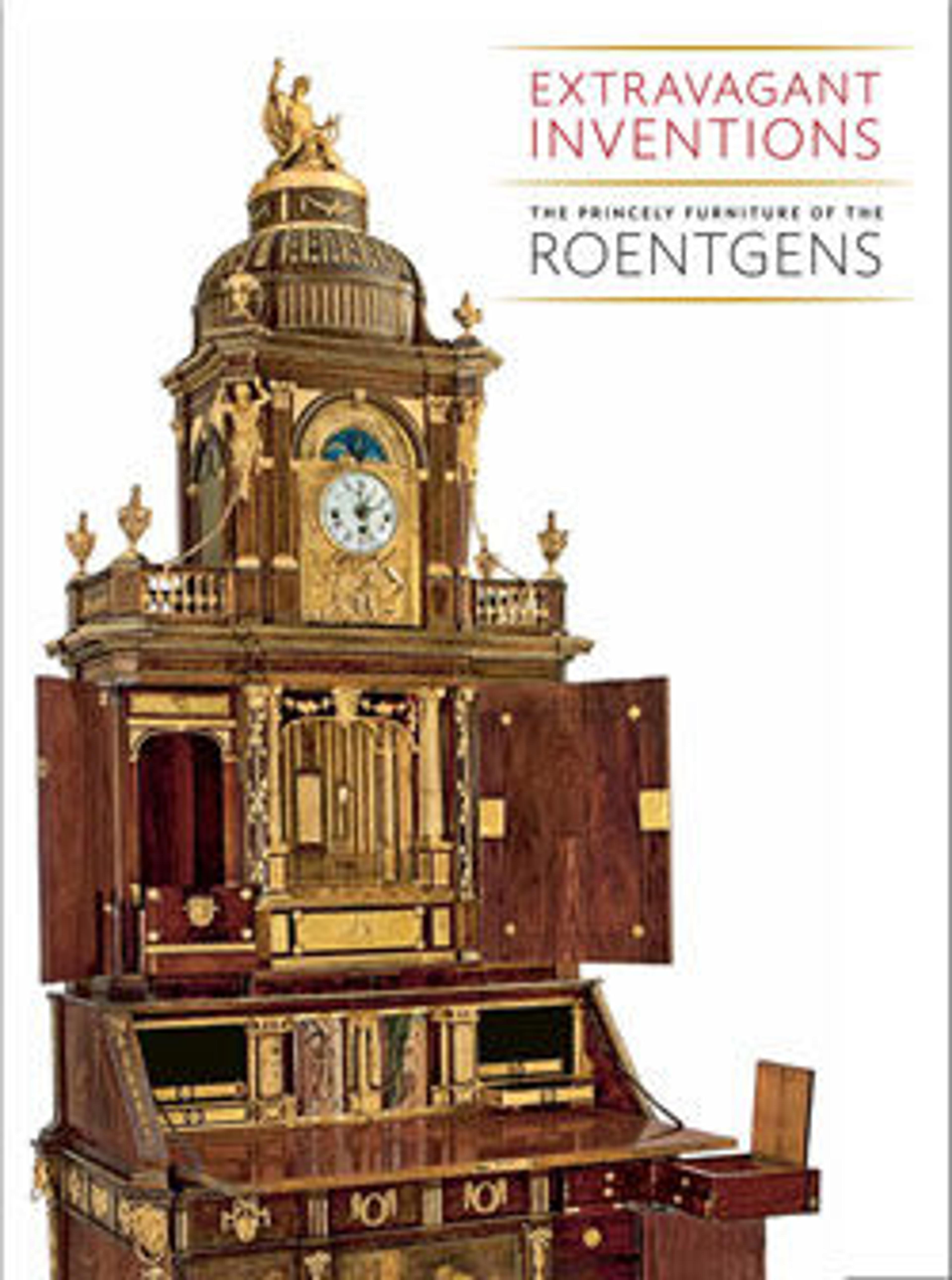Rolltop desk
This rolltop desk demonstrates the inventive talent of its maker, distinguished by six legs instead of the usual four. The chinoiserie marquetry scenes have a painterly effect that Roentgen alone attained, using minute pieces of naturally colored exotic woods. His mechanical ingenuity is exemplified by the workings of the lower section of the desk: when the key of the lower drawer is turned to the right, the side drawers spring open; if a button is pressed on the underside of these drawers, each swings aside to reveal three other drawers. The monogram DR, inlaid on the drawer below the keyhole, indicates the cabinetmaker's satisfaction, as his work is rarely signed. The turn of the key commands which side opens. The interior is decorated in the restrained French Neoclassical style with mahogany and gilded mounts. The outside was once colorful, as the Chinoiserie marquetry is set into maple panels, perhaps stained gray, evoking a silky fabric popular in the late 1770s. Like a theater scrim, it would have set off the scenes of Chinese life. Although Roentgen maintained his workshop at Neuwied, Germany, where this desk was made between 1776 and 1778, his French clientele became so important that he opened an outlet in Paris and joined the Parisian guild in 1780.
Artwork Details
- Title: Rolltop desk
- Maker: David Roentgen (German, Herrnhaag 1743–1807 Wiesbaden, master 1780)
- Designer: Drawer pulls after a design by Thomas Chippendale (British, baptised Otley, West Yorkshire 1718–1779 London)
- Designer: Marquetry panel after a design by Januarius Zick (German, Munich before 1730–1797 Ehrenbreitstein)
- Date: ca. 1776–79
- Culture: German, Neuwied am Rhein
- Medium: Oak, cherry, pine, mahogany, veneered with maple, burl woods, holly, hornbeam (all partially stained), tulipwood, mahogany, and other woods; mother-of-pearl; partially gilded and tooled leather; gilt bronze, iron, steel, brass, partially gold-lacquered brass
- Dimensions: 53 1/2 x 43 1/2 x 26 1/2 in. (135.9 x 110.5 x 67.3 cm.)
- Classification: Woodwork-Furniture
- Credit Line: Rogers Fund, 1941
- Object Number: 41.82
- Curatorial Department: European Sculpture and Decorative Arts
More Artwork
Research Resources
The Met provides unparalleled resources for research and welcomes an international community of students and scholars. The Met's Open Access API is where creators and researchers can connect to the The Met collection. Open Access data and public domain images are available for unrestricted commercial and noncommercial use without permission or fee.
To request images under copyright and other restrictions, please use this Image Request form.
Feedback
We continue to research and examine historical and cultural context for objects in The Met collection. If you have comments or questions about this object record, please complete and submit this form. The Museum looks forward to receiving your comments.
